Israelis love technology. They are early adapters, and relentless innovators, always looking for ways to improve their lives in every possible area.
With the country’s talent for development, it’s no surprise that some of the world’s top gadgets were designed and developed in Israel. Israel21c asked me to put together a list of the ten best. Here’s my take:
1. DiskOnKey

Dov Moran, founder of Modu (see below), previously hit the big time with his company M-Systems, which developed the very first DiskOnKey (or DiskOnChip as M-Systems originally dubbed it).
The concept is simple enough: Jam up to 64 gigabytes of data onto a tiny gadget no larger than a house key. The latest versions actually look like a key and can hook onto your key chain.
DiskOnKeys were part of the “one-two sucker punch” that killed the venerable floppy disk (the other being cheap recordable CD-ROMs and later DVDs). Aside from being a reliable way to transfer data from computer to computer, disk-on-keys are now finding new life, expanding the storage space of the latest portable craze, the NetBook.
In 2005, PC World named the DiskOnKey one of the world’s top 10 gadgets in the last 50 years. In 2006, international powerhouse SanDisk purchased M-Systems for $1.6 billion.
2. Powermat
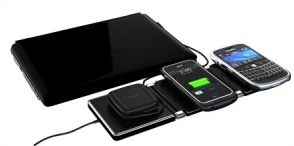
How many power cables do you have running under your office desk for all your computers, hard drives, modems, routers, etc.? How about those kitchen appliances and their connections to the sockets? Wouldn’t it be great to get rid of the clutter?
That’s what Powermat promises to do. The Israeli company’s technology lets you embed a power grid in just about anything – from a desk to a kitchen counter. Then, with a wireless receiver hidden inside a device, there’s no need for plugs anymore. Just position the device or appliance near a power “hotspot” and away it goes.
In a demo on the company’s website, a salesperson goes so far as to pour water all over a “Powermatted” kitchen counter – with no burn-outs or electrocutions. Other demonstrations show iPods and Blackberries charging when simply placed on a table.
The company is a joint venture between Michigan-based HoMedics and Israel’s Powermat. The first products will be available in time for this winter’s shopping season.
3. Epilady
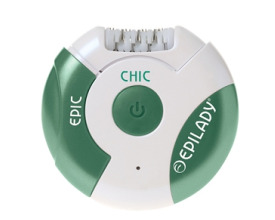
The story of this gadget is fraught with intrigue. We’re talking about a hair removal product invented in Israel that now has copycat versions worldwide. The original Epilady “epilator” was released in 1986. It had a rotating spring that worked by catching hair and pulling it out. It isn’t pleasant but, according to women, it works.
Newer versions have more of a tweezer action. Either way, the result is not unlike a waxing treatment, except that you can do it yourself at home, for a fraction of the cost. An Epilady treatment lasts up to four weeks.
Epilady was the first but has been surpassed by international brands including Braun and Remington (Epilady sued Remington over patent infringement but lost). Still, the company has sold 28 million units over a 23-year career and now sports 13 different models from the “Traveler” to the youth-marketed “Epigirl.”
Ironically, when the first Epilady came out in Israel it was given the “American” sounding name “Nice and Easy” while the company used the “Epilady” moniker overseas.
4. Modu
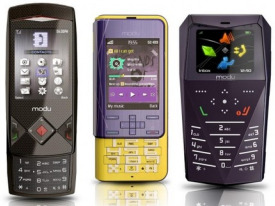
Modu looks something like a cell phone and something like an MP3 player, but isn’t really like anything you’ve ever seen before. Essentially, Modu is a tiny device with cellular capabilities that can be slipped into any number of “jackets” to give it a specific functionality. One jacket transforms Modu into a full MP3 player, in another it’s a camera. The plan is to create a mini-economy around Modu accessories.
Our favorite Modu jackets: Modu Executive (looks like a Blackberry); Modu Love (a stylish cell phone with a big heart); Modu Kids (imagine a cute green Nintendo DS); Modu Boombox (a little phone with big, built-in bass-enhanced speakers); and the Modu Bicycle Mate (that snaps onto your handlebars).
The company is facing increasing competition from Apple, Nokia, Palm and others, which may be why, despite raising nearly $130 million since its launch in 2007, Modu recently laid off 80 employees. Still, the news isn’t all bad. Just a week before the layoffs Modu announced the launch of a touch screen jacket using Google’s Android mobile operating system.
5. Boxee

Boxee isn’t exactly a gadget. It’s software that’s intended to be integrated into other companies’ gadgets as their Internet media operating system. If it were just a TV playback system, Boxee wouldn’t be so hot; after all Microsoft and Apple have similar solutions. But Boxee excels at playing all types of video, audio and even image files. YouTube, NetFlix, Flickr and Pandora are all built in. And Boxee also plays well on the Xbox.
There are also a bunch of nifty social networking features that allow you to share what you’re watching with friends or tweet in real time.
Boxee announced recently that it is coming out with its own standalone hardware – the “Boxee Box.” In the meantime, you can install it on any computer you have – absolutely free. We installed Boxee on the laptop we have connected to our television and we love it.
6. Eye-Fi
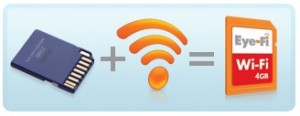
Here’s an idea that’s so obvious it’s a wonder no one else thought of it. You’re at a family event, your child says his or her first words and you have the good fortune to capture the moment with your digital camera. You want to share it with the world but to do that you’d have to get back to your house, plug the camera into your computer via a USB cord, upload it, and then post it to Facebook or your blog.
With Eye-Fi you can upload those photos wirelessly from anywhere. The company sells a standard SD card (that you need to run your camera, anyway) that has built-in WiFi connectivity. That means that anywhere there’s a hotspot (which these days is just about everywhere) you can upload your photos to one of 25 sites that you specify in advance through the Eye-Fi software.
The Eye-Fi works with all the top cameras, from Canon to Kodak. The company was founded in 2005 and two of its four founders, Yuval Koren and Ziv Gillat, are Israeli.
But we have to ask: Is there still a market for a wireless SD card? Anyone with an iPhone already has the ability to wirelessly upload pictures – and even video – immediately. The answer: Standalone cameras with higher resolution than a phone-cum-camera haven’t gone the way of the dinosaurs yet, nor is there any reason to think that they will, which means Eye-Fi has plenty of visibility ahead.
7. MobileEye

Speaking of visibility, another Israeli high-tech company, MobileEye, combines a tiny digital camera with sophisticated algorithms to help drivers navigate their vehicles more safely.
Consider the lane departure warning system. When a driver starts drifting out of a lane or doesn’t use the turn signals, the system rings an alert. The MobileEye application is so sophisticated that it can even sense when a driver is “about” to change lanes inadvertently.
Fused with the car’s steering system, MobileEye takes the camera that much further. Other applications include a forward collision warning, traffic sign recognition and pedestrian detection.
MobileEye has been around since 1999 and has deals with GM, BMW and Volvo, among others. The company maintains R&D in Jerusalem but is now headquartered in The Netherlands.
8. Ctera

Israeli company Ctera makes a small gadget that connects to a USB hard drive, transforming it into a cloud-based offsite storage system.
It’s a two-step process. First, data is backed up from your main computer to the external drive. Next, it’s sent to servers “in the cloud.” The result is that your computer isn’t constantly sending data to the Internet and slowing down processing speed. With this gadget multiple computers can now be connected to a USB drive that used to be tethered to just a single machine.
Ctera’s “Cloud Plug” is small enough to fit in an envelope which can be mailed from an ISP (Internet Service Provider) to its customers. ISPs like the device because it gives them a way to monetize all the online backup traffic they’re losing to third party services. Ctera also sells the gadget direct to the public for $199. Given that it’s not a question of if, but when, your hard disk will die, cloud storage has a rosy future. Ctera aims to be in the thick of it.
9. Easy-2-Pick
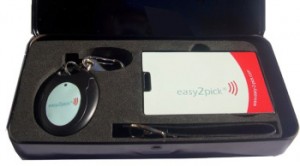
Airplane travel is stressful. There are the security checks, uncomfortable seats, tasteless meals and then, of course, there’s the fact that you’re hurtling through the air at breakneck speeds in a tin box. But perhaps the worst party of all is waiting for your luggage. You never know when it’s coming up the conveyor belt. You grab a bag only to discover that it belongs to someone else. Wouldn’t it be great if you could just sit back and wait for your luggage to alert you when it’s arrives?
That’s the idea behind a simple device from Easy-2-Pick, a small Israeli company founded by two American Express travel agents. The gadget has two components. One piece attaches to the luggage, the other fits in your pocket. The range between the two pieces is only 15 meters, so the alert only sounds (it also lights up and vibrates) when your luggage is close by.
The Easy-2-Pick system was red hot when we first wrote about it last year. It seems to have floundered since then as the inventors search for distributors. Still, it’s a wonderful idea and we hope it succeeds. Imagine the same technology being applied to your keys… or your car, when you can’t remember where you parked.
10. Medical imaging via cell phone
 In the Western world, we take for granted high-tech tools for physicians and hospitals such as the hand held ultrasound wand that displays the heartbeat of a fetus or detects a tumor. But how would you use that same device in a remote village in Africa where there isn’t even any electricity?
In the Western world, we take for granted high-tech tools for physicians and hospitals such as the hand held ultrasound wand that displays the heartbeat of a fetus or detects a tumor. But how would you use that same device in a remote village in Africa where there isn’t even any electricity?
Boris Rubinsky, a professor at the Hebrew University in Jerusalem, has come up with a novel concept: blend the wand with a cell phone. The phone powers the medical imaging device, then transmits the resulting data to a central processing facility – perhaps even in Israel – where it’s turned into an image which can then be messaged back to the village physician’s phone
The entire process is not unlike the trend in medicine in recent years where X-rays taken in the US are sent to Israeli radiologists for review and then returned via the Internet – saving money and time (it’s daytime in Israel, while it’s still night in the US when radiologists may not be so readily available).
Rubinsky’s life saving gadget is still just in the prototype stage but it has a promising future (and Rubinsky has the patents to back it up). Next in line: Rubinsky is working on a gadget that will extract small amounts of electricity from potatoes – just enough to charge a cell phone in those same far flung third world villages.
{ 1 comment… read it below or add one }
viagra priligy The meta analysis concluded that benefits might potentially be achieved for reducing CT transmission and PID by targeted and intense repeat testing of high prevalence key female populations 4
{ 1 trackback }